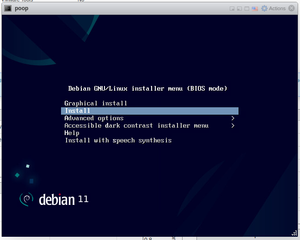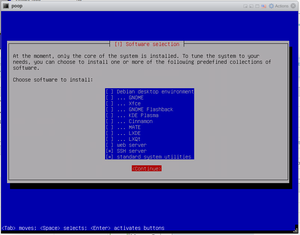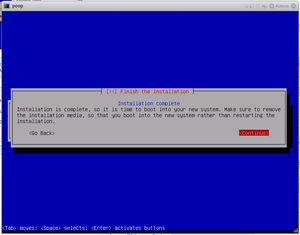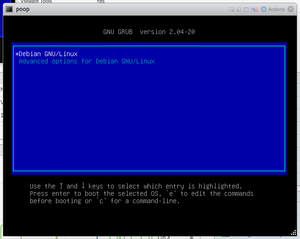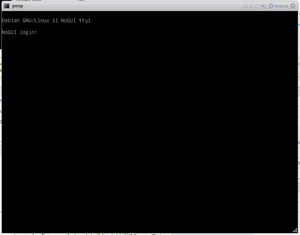Difference between revisions of "Mini Debian"
(→Samba) |
|||
| Line 72: | Line 72: | ||
[[Linux - Adding a new drive from the command line{{!}}Adding a new drive from the command line]] | [[Linux - Adding a new drive from the command line{{!}}Adding a new drive from the command line]] | ||
=Usage notes= | =Usage notes= | ||
==Missing commands== | ==Missing commands== | ||
Revision as of 14:58, 18 January 2022
So...
A full desktop system as a server VM really is a bit silly.
Let's do something different.
Installing a minimal Debian
- Insert the CD/ISO/whatever & boot the machine/VM from it.
- I'm running it as VMs under ESXi
- "ESXi 6.7 VM", "Linux", "Debian GNU/Linux 10 (64-bit)"
- 4 CPUs, 4GB memory, 16GB storage
- I'm running it as VMs under ESXi
- When the installer menu appears, select "Install" rather than the default "Graphical Install" option
- Cruze along configuring the system to your liking until you reach the screen titled "[!] Software selection"
- Make sure that only SSH server and standard system utilities are selected, then continue
- Keep cruzing along until it tells you Installation complete
- When you tell it to continue, the system will reboot.
All done
Configuring the minimal Debian
Install & configure sudo
By default, root account is not enabled for login (other than directly at the console) to Debian. As a result, sudo authentication is needed. (But it doesn't seem to be installed by default...)
- Log in to the Debian machine and switch to root using the
sucommand.su -- (remember that root pasword you picked during install?)
- If
sudois not installed, install the sudo package using the following command:apt install sudo
- Add an existing user with id=USER to group=sudo:
adduser USER sudo
- Log into the USER shell, and type the following command to verify that the user is authorised:
sudo -v
You have successfully configured sudo in Debian.
Install & configure vim
sudo apt install vim
Then fix the Visual Mode silliness...
sudo vim ~/.vimrc
set mouse-=a syntax on
Aliases for ls
ls needs it's aliases set. (Who in heck doesn't use ll for ls -l???)
vi ~/.bashrc
Scroll down & you'll see:
# some more ls aliases #alias ll='ls -l' #alias la='ls -A' #alias l='ls -CF'
Un-comment those aliases!
source ~/.bashrc
More Configurations
Installing Samba from the command line
Adding a new drive from the command line
Usage notes
Missing commands
If you're used to Ubuntu-derived Linuxes, you may note that a lot of commands cannot be found while signed in as a regular user. Before attempting to install them, check with sudo or while signed in as root. The root user account has a different search path that includes the programs that are normally not allowed to regular users anyhow.
One good example:
ifconfig results in-bash: ifconfig: command not found
but...
sudo ifconfig results in details about your network connection(s)
